There is no single character motivation as clear or compelling as revenge. A character is wronged and seeks vengeance for what he perceives to be an injustice—an emotion that any audience member can recognize and understand. In his trilogy of films exploring the concept through three different, yet kindred premises with revenge at their core, director Chan-Wook Park weaves a compelling triptych that examines these themes of revenge, violence, and redemption—along with their consequences—in a profound, thought-provoking manner.
Starting with Sympathy for Mr. Vengeance, then the infamous Oldboy, and concluding with Sympathy for Lady Vengeance, each film shares a single protagonist on a relentless quest for revenge. Each of their journeys also includes creative and shocking set pieces fueled by their specific versions of vengeance, as each character successfully accomplishes their pursuit. And yet, throughout each, a curious feeling looms over the climax—a feeling that the satisfaction of revenge promised by the premise has also clashed against a new feeling of uneasiness cemented by the consequences of the character’s fate. And, ultimately, Park uses this compelling vehicle of the revenge to demonstrate how such a strong motivator can often be the most futile and unsatisfactory path to moral fulfillment.
Sympathy for Mr. Vengeance
The first film in the trilogy demonstrates this dichotomy of revenge through the two characters on either side of its agency—and the most blatant example of its futility for both parties. Sympathy for Mr. Vengeance starts as the story of Ryu—a man both deaf and dumb—determined to save his sister’s life by buying a kidney from black market gangsters: a kidney that he hopes to purchase by kidnapping the daughter of a wealthy executive from the company that laid him off. Ryu’s reasons for revenge occupy the first half of the story. Besides these disabilities, he is also laid off from his grueling factory job when he is most in need of money. But despite these obvious reasons for revenge (which would suffice most storytellers), Park painstakingly displays the various ways that both Ryu and his anarchist girlfriend—Yeong-Mi—hope to avoid the conventional label of kidnappers and the negative connotations that accompany their actions: they entertain the victim, try to avoid any violence, hope to only ask for the money (which they justify as the victim not even needing due to his extravagant wealth), manipulate the truth of the situation to appear worse than they are actually treating her, and attempt to rationalize every line of logic that would make their reasons for revenge justifiable.
And, of course, everything goes wrong.
Ryu’s sister discovers the kidnapping plan and—feeling herself to be the cause of this abhorrent act—commits suicide. While burying his sister, Ryu becomes so hypnotized in the promise of burying his sibling in the spot where she asked—not to mention the fact that he is deaf—that the kidnapped Yu-Sun accidentally drowns in the surrounding river. Her father, Dong-jin, now becomes fueled for his own quest for revenge against Ryu and those responsible for the death of his daughter—shifting the narrative at almost exactly the midway point to trek this new track of revenge. While Ryu and his anarchist girlfriend attempted to justify their reasons for revenge, the death of his daughter leaves Don-jin in a state of near-suicidal plan of action. The father sees no other outlet for satisfying his bloodlust other than the murder of those who murdered his daughter.
Park’s more playful and ironic reversals of the revenge tale that populate the first half are given drastic, darker contrast in the latter half. Whereas Ryu and his girlfriend upheld a falsified version of their savagery, Dong-jin wastes no time employing every barbaric method at his disposable to avenge his daughter’s death. Specifically, and most memorably, he devises a makeshift electrical device upon Yeong (Ryu’s anarchist girlfriend)—for which he brutally tortures her. Though she warns him of her importance as part of an anarchist group, Dong-jin shrugs away any threats of violence that may come to him—again—demonstrating a man prepared to fulfill his revenge or die trying to achieve it.
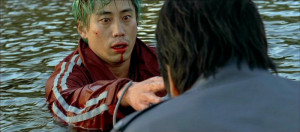 Finally, after electrocuting Yeong to death, and after Ryu’s discovery of her corpse, the two men began a tense standoff waiting to murder the other. Ultimately, Dong-jin proves the victor after rigging his home with an electrical trap that knocks Ryu unconscious. Now hauling Ryu back to the lake that proved to be the site of his daughter’s death, the father forces Ryu to undergo that same punishment that engendered his daughter’s death. Though Dong-jin acknowledges that Ryu may be a good man, the father also explains that he has been left with no recourse but to kill him due to balance out the tragedy of his daughter’s death. This leads to the brutal, stomach-turning climax, where Dong-jin hacks off both of Ryu’s Achilles Tendons to induce his drowning.
Finally, after electrocuting Yeong to death, and after Ryu’s discovery of her corpse, the two men began a tense standoff waiting to murder the other. Ultimately, Dong-jin proves the victor after rigging his home with an electrical trap that knocks Ryu unconscious. Now hauling Ryu back to the lake that proved to be the site of his daughter’s death, the father forces Ryu to undergo that same punishment that engendered his daughter’s death. Though Dong-jin acknowledges that Ryu may be a good man, the father also explains that he has been left with no recourse but to kill him due to balance out the tragedy of his daughter’s death. This leads to the brutal, stomach-turning climax, where Dong-jin hacks off both of Ryu’s Achilles Tendons to induce his drowning.
Not much later, Dong-jin reappears from the site of the fateful lake—dragging bloodied body bags behind him: body bags which clearly contain Ryu’s dismembered corpse. However, the anarchist group of Ryu’s girlfriend suddenly appears. The group savagely stabs and kills Dong-jin—leaving him as dead as the disembodied corpse of Ryu not but a few feet ahead of him.
The final shot of the film—with Ryu’s bloodied body bags overlooking the lake of Dong-jin’s daughter’s death, coupled with Ryu’s sister buried just beyond, and Dong-jin himself lying stabbed just behind him—serves as a clear testament to the thesis of Park’s wild story at the heart of Sympathy for Mr. Vengeance. Despite the intentions of both parties, either to save his sister’s life, or to punish a criminal for the death of a young girl, both men and their loved ones lie dead as a result of their choice to pursue a path of revenge.
Oldboy
Park’s follow up to Sympathy for Mr. Vengeance remains his most famous, evocative, and haunting of the trilogy in the form of 2003’s Oldboy. Perhaps the most intriguing premise of the three, Oldboy follows the quest for vengeance led by Oh Dae-su—a man imprisoned for fifteen years and suddenly released with the single motive of revenge on his mind. Undeniably the most cinematic and stylish of the three, Oldboy features a number of scenes that have cemented the film’s instant, iconic status. These include a scene of Oh Dae-su consuming a live octopus upon his release, and an extraordinary, single-take hallway fight scene that pits the protagonist with a hammer against a narrow corridor filled with fighters ready to stop him. While the initial set-up of Oh Dae-su being imprisoned for so long, framed for his wife’s murder and separated from his daughter for fifteen years without cause seems like the obvious premise, the more interesting and underlying question of his release proves to be the catalytic event for the narrative’s true examination of revenge for both Oh Dae-Su and his captor.
As Oh Dae-su seizes upon the few clues made available to him during his imprisonment to find those responsible, he also falls in love with the young woman Mi-do, who reciprocates his feelings of love and attraction. However, Oh Dae-su also begins to unravel the mystery of his imprisonment that imbues another layer of moral ambiguity. Oh Dae-su discovers that a man named Woo-jin is responsible for his fifteen-year-imprisonment. A man that once attended the same high school as Oh Dae-su, and a man to whom Oh Dae-su caught having an incestuous affair with his sister that he then retold to the entire school—causing feelings of shame for Woo-jin and his sister that ended up in the latter’s committing suicide. In the climactic confrontation between the two men, Woo-jin finally exposes the truth of his elaborate plan against Oh Dae-su. The recent attraction between him and Mi-do is revealed to be a calculated manipulation in order to bring the two together and fall in love—as Mi-do is actually Oh Dae-su’s daughter.
For exposing his own incestuous affair, Woo-jin has dedicated his own plan of revenge toward replicating the experience upon Oh Dae-su—to catastrophic and horrifying results. Woo-jin offers Oh Dae-su the chance to kill him by offering the remote to a pacemaker in his heart. Nonetheless, when Oh Dae-su presses the button, Woo-jin offers a final mocking attack by revealing that the pacemaker remote is actually a remote to a speaker system—one that replays the audio of Oh Dae-su and Mi-do having sex. Having achieved his coup de grace, Woo-jin commits suicide with a bullet to the head. Cutting to some unknown time later, Oh Dae-su consults a hypnotist for help in ridding his memory of the entire affair. The final shot concludes on an ambiguous smile—one that allows the audience to arrive at their own meaning of whether or not the hypnotism was successful as Oh Dae-su walks away with Mi-do toward an unknown future.
The ambiguity of this ending, however, again underlines Park’s thesis that connects this trilogy from a thematic level. Both of these men have completed their revenge against the other, and one has killed himself, while the other walks away as a shell of a human being. Though Oh Dae-su’s journey—as a man who starts as a drunken imbecile missing his daughter’s birthday only to be transformed into a vehicle for revenge—serves as a compelling character for the audience to attach their sympathies, Park subverts expectations of the revenge-thriller by digging deep past those surface layer emotions evoked by revenge to demonstrate its uncertain purpose when brought to the extremes of its conclusion.
The many notable plot points responsible for these instantly-iconic scenes—from Oh Dae-su wish to eat something alive after his imprisonment, to his defeating a hallway of men with a knife stuck in his back, to cutting out his tongue and acting like a dog—are made so effective not for hollow shock value, but by virtue of the fact that they are indicative of the extremes of human nature when consumed by such a singular emotion as revenge. Park uses varied methods of the same motivation to again display the various ways that revenge may infest the mind and change a person’s psychology—whether through Woo-jin ridiculously complicated plan conceived over decades or through Oh Dae-su’s almost animalistic, instinctual drive toward revenge—that both men are only capable of satisfying this base emotion at the cost of sacrificing all those other emotions that compose their humanity. Ultimately, this helps give some context to the ambiguous ending of Oh Dae-su’s future, which proves that no matter what happens to this character moving forward, it is a fate that has come at the compromise of his former identity.
Sympathy for Lady Vengeance
With a title clearly echoing Park’s first venture into the trilogy, and yet that also distinguishes how far the filmmaker has refined his focus since that initial output, Sympathy for Lady Vengeance tells another complicated story of revenge through the first true female protagonist of the series: Lee Geum-ja. Wrongfully accused for the murder of a child that she did not commit, Geum-ja spends her time befriending other inmates and exacting her plan for revenge against Mr. Baek—the man that blackmailed her into accepting the arrest in order to spare the life of her own child.
Lady Vengeance contains the most atypical structure of the three—to surprising and compelling results. Park crosscuts between Guem-ja’s time in prison, where she befriended inmates and cultivates a kindly appearance, while also tracking her story in the present timeline as she puts her prison experiences to use in cultivating a new identity. Park has always possessed a tremendous visual eye for character design—from Ryu’s green hair in Mr. Vengeance, to Oh Dae-su’s frazzled hair and bold black suit in Oldboy—but Guem-ja’s represents possibly the most striking and sensational of all three. With red-eye shadow upon a pale face, black pumps, and an almost ninja-like trenchcoat, Geum-ja transforms herself into a manifestation of revenge—yet one that distinctly maintains her femininity and flashes of her former identity. That former identity is also found through her daughter, Jenny, now estranged after being given over to foster parents in the wake of Geum-ja’s prison sentence.
Nonetheless, Geum-ja eventually manages to track down the odious Mr. Baek for whom she has targeted as the object of her vengeance. Yet, upon finding him, she also finds the tokens of other children—connecting the dots that Baek’s modus operandi involved stealing small objects that would belong to his victims—all of whom were children. Consequently, she reaches out to the former detective involved with the case, who then helps her confirm the fact that Mr. Baek was indeed responsible for a number of other child murders.
Most intriguingly, and in stark contrast to the former two films in the trilogy, this causes Geum-ja to choose not to be the sole executor of revenge for the crime. Instead, she reaches out to the other bereaved family members of the murdered children and asks them to collude in punishing Mr. Baek. By leaving photo evidence of acting as a unit so that they may not turn on one another, the various family members take turns individually torturing and punishing Mr. Baek—until a lonely grandmother delivers the fatal blow with the scissors that belonged to her granddaughter. Afterward, the group seals their fate together by eating a dessert and reflecting on their deed. But after the group has left, Geum-ja remains haunted by a ghost of the victim for which she was initially blamed. The film ends on a somewhat ambiguous final shot, where Geum-ja plunges her face in a pure white cake—sobbing uncontrollably—while her reunited daughter hugs her in comfort.
Despite the masterful storytelling exhibited in the former two films, Sympathy for Lady Vengeance contains possibly the most compelling issues of moral ambiguity so far addressed in this specific examination of revenge. While the prior stories focused on their protagonist’s own personal vendettas, Lady Vengeance expands and filters her revenge through the prism of others. There is a scene in the last half of the film, where Geum-ja and the bereaved family members debate the ethics of their actions—weighing the pros and cons of how the legal court system would deal with this matter while also hoping to justifying their own personal blood thirsts—that plays out like the most perverted form of courtroom drama to ever grace the screen. And indeed, as shocking as the final twenty minutes of Oldboy stand for the utter depravity and brutality on screen, there is something as equally compelling and unbelievable as the final half of Lady Vengeance. Watching these seemingly normal members of society decide to execute various forms of punishment with a variety of weapons upon this guilty killer, plays out as a fascinating study of vengeance in group from—one that can be extrapolated as a moral study held by larger legal bodies like the courts, government, etc—and how revenge can come to be justified not only by those with personal vendettas but by a collective association of that same feeling when looking for an outlet for catharsis.
By the conclusion, Park leaves his character with another ambiguous, possibly worse fate than that seen before the start of their quest for vengeance. Now responsible for helping serve the fates of a group, as well as her own personal bloodlust, Geum-ja still looks for absolution in the form of the boy for whom she was originally accused. She receives a strange vision, wherein the boy (now at the age that he would have grown to) gags her. Afterward, apparently reunited with her daughter, Geum-ja plunges her face in a pure white cake—the stark blackness of her character clashing against the pure white snow of her surroundings.
Despite helping those still grieving the loss of their child achieve some form of collective catharsis, Geum-ja is also faced with the fact that her child still survives. Unlike the others at the dinner table, now able to move forward with their lives without their child, Geum-ja remains faced with the fact that her entire life had been motivated by this single desire. And now, with blood on her hands but with her daughter by her side, and still unable to be granted that true resolution from the victim of her past, Geum-ja can do nothing but weep—and again destroy that symbol of purity with her tears of shame.
Like with the prior two films, his conclusion to the trilogy ends on a note of contending emotions. Park uses themes of revenge as an exploration into deeper, darker aspects of humanity that expose this extreme emotion for all its triumph and ultimate futility. In resorting this animalistic, vengeful aspect of their persona, each character ends up dead or left to a fate arguably worse than death—one in which all their identity has vanished or at the cost of corrupting every corner of their soul. Though each character begins with the best of intentions to justify their unlawful acts as something for the greater good, they are ultimately exposed to be attempting to fulfill nothing more than their own personal satisfaction.
Moreover, Park proves himself an innovator in the genre. One that impressively subverts typical expectations and tropes of the revenge film, and one that demands for audiences to question their own motives in so readily attaching themselves to these characters that are often as guilty as they are empathetic. While often proving this thesis through some of the most extreme, intense, and brutal scenes to be portrayed on the silver screen, Park demonstrates the ultimate conclusion for this extreme form of behavior—for all the triumphs and futilities offered through the choice of revenge.

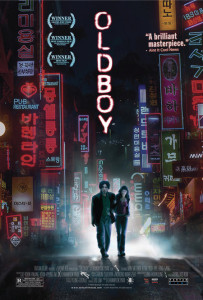

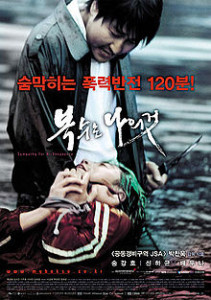
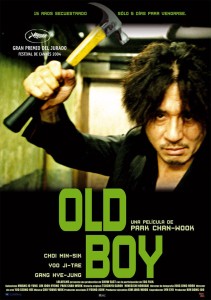
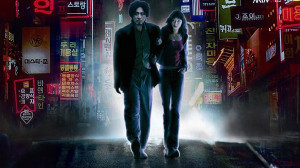
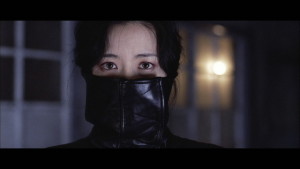
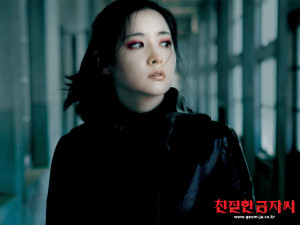
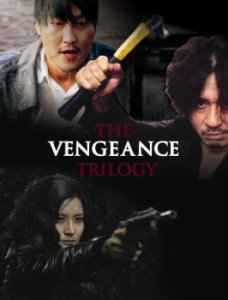
Thanks for a great review of the trilogy. I’m not the writer you are – and am happy to agree in all points.
I’ve always loved Japanese films early on – but a friend recently turned me on to Korean films – these, along with “New World” and some of the other Korean gangster style films. I watched the trilogy over a weekend a couple of weeks ago (Netflix) and I’m still touched by the stories and the cinematography.